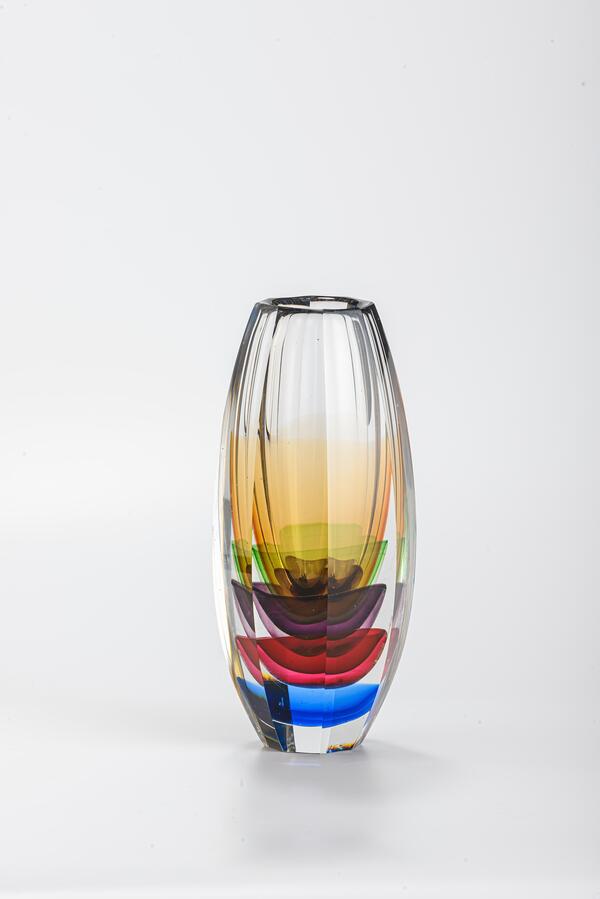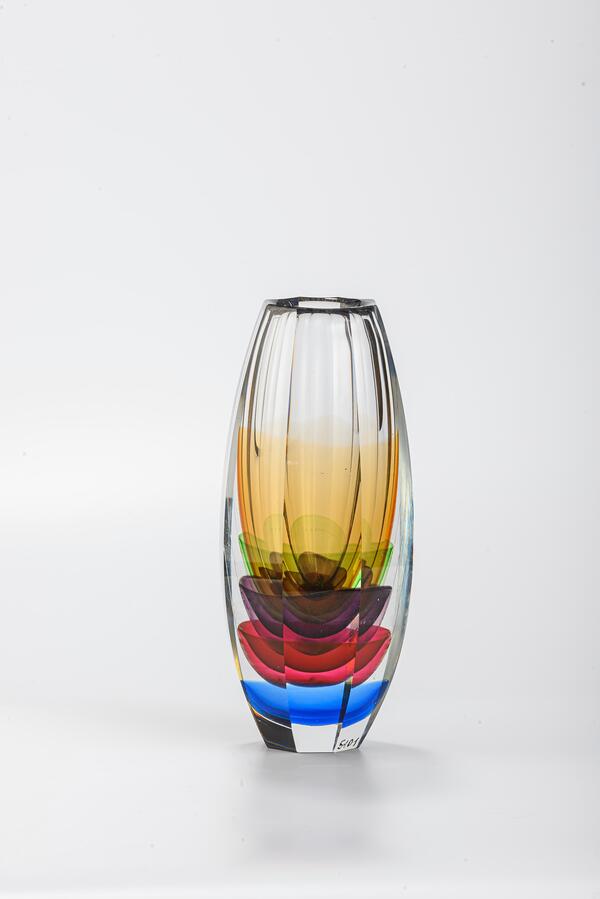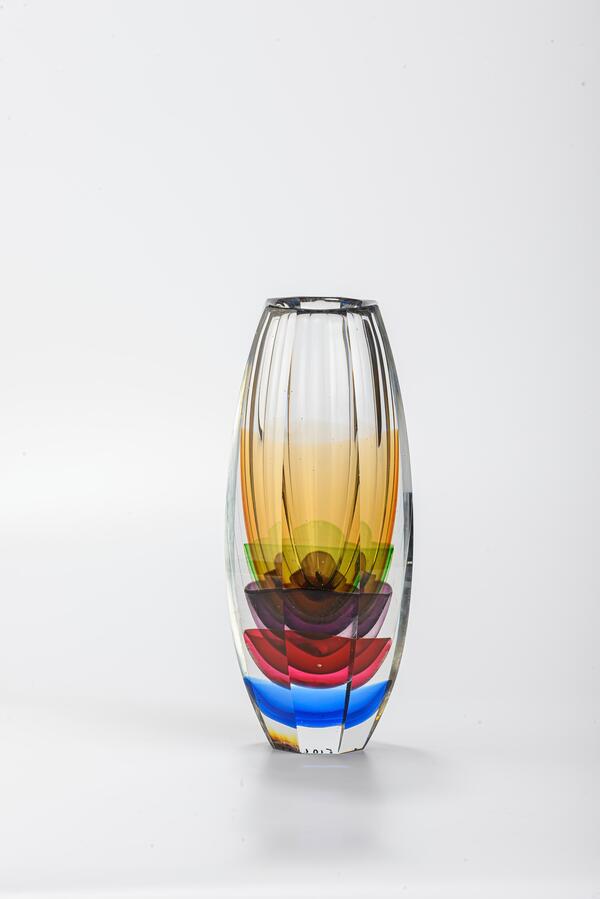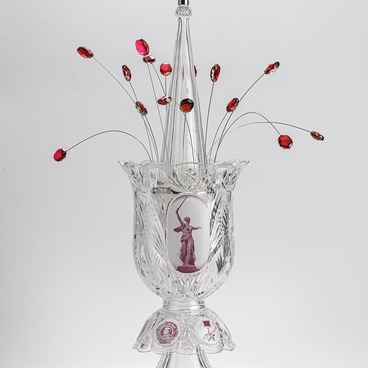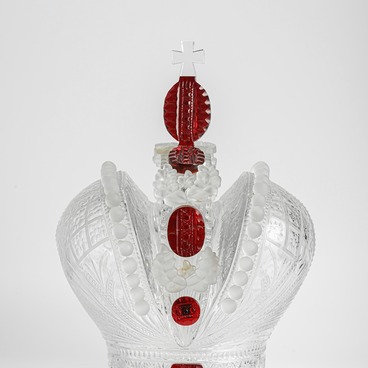Boris Alekseevich Yeremin was a hereditary glassblower. His uncle and teacher Mikhail Sergeevich Vertuzaev was considered one of the finest masters of glassmaking. Both craftsmen participated in the largest projects of their time: the most famous being the crystal service for the Soviet government, the Stalinist glass table, and the vase-fountain for an exhibition in New York (1939).
Boris Yeremin worked at the “Red Giant” glass factory from 1924 to 1948. In 1948, he and some other glassblowers received a job at the future art glass factory in Leningrad, where he stayed at a special invitation from the management and artists.
It was at the Leningrad factory in the 1960s that Yeremin developed a number of decorative techniques for creating colored glassware. One of those techniques was called a “watercolor spot” (or “blurry spot”). Unlike the already known colored overlay, which was applied to colorless glass, the new technique involved the partial application of colored molding. In this case, it was possible to obtain a thinner layer of glass and light color halftones. The spots could vary in shape and color. To achieve the desired effect, in addition to the main blank, another thin-walled blank is blown with a colored spot. The colorless and colored walls of the blanks are fused together, sometimes a stencil is used.
For the “Caps” vase, spots of different colors were applied successively to each set of colorless crystal, with each spot being large and homogeneous. The illusion of hemispheres “hanging” in the glass is emphasized by the wide edge on the surface of the vase. The 1972 vase presented at the exhibition, with green, violet, red and blue caps, was made by Boris Yeremin in Leningrad and donated to the Museum of Glass and Crystal.
The “Caps” vase became the first object made using the watercolor spot method. The vase entered textbooks on the technology of manufacturing art products.
Boris Alekseevich Yeremin worked with artists Vera Mukhina, Adele Yakobson, Nina Rostovtseva, Anna Lipskaya, and Ekaterina Yanovskaya. Yanovskaya, who worked for many years as the chief artist of the Leningrad Art Glass Factory, reminisced that Yeremin could make products of any complexity. In addition, he never copied other artworks, preferring to create his own unique pieces.
Boris Yeremin worked at the “Red Giant” glass factory from 1924 to 1948. In 1948, he and some other glassblowers received a job at the future art glass factory in Leningrad, where he stayed at a special invitation from the management and artists.
It was at the Leningrad factory in the 1960s that Yeremin developed a number of decorative techniques for creating colored glassware. One of those techniques was called a “watercolor spot” (or “blurry spot”). Unlike the already known colored overlay, which was applied to colorless glass, the new technique involved the partial application of colored molding. In this case, it was possible to obtain a thinner layer of glass and light color halftones. The spots could vary in shape and color. To achieve the desired effect, in addition to the main blank, another thin-walled blank is blown with a colored spot. The colorless and colored walls of the blanks are fused together, sometimes a stencil is used.
For the “Caps” vase, spots of different colors were applied successively to each set of colorless crystal, with each spot being large and homogeneous. The illusion of hemispheres “hanging” in the glass is emphasized by the wide edge on the surface of the vase. The 1972 vase presented at the exhibition, with green, violet, red and blue caps, was made by Boris Yeremin in Leningrad and donated to the Museum of Glass and Crystal.
The “Caps” vase became the first object made using the watercolor spot method. The vase entered textbooks on the technology of manufacturing art products.
Boris Alekseevich Yeremin worked with artists Vera Mukhina, Adele Yakobson, Nina Rostovtseva, Anna Lipskaya, and Ekaterina Yanovskaya. Yanovskaya, who worked for many years as the chief artist of the Leningrad Art Glass Factory, reminisced that Yeremin could make products of any complexity. In addition, he never copied other artworks, preferring to create his own unique pieces.


